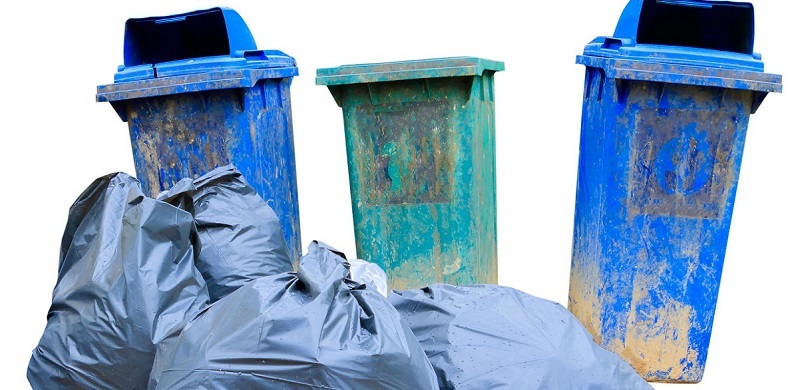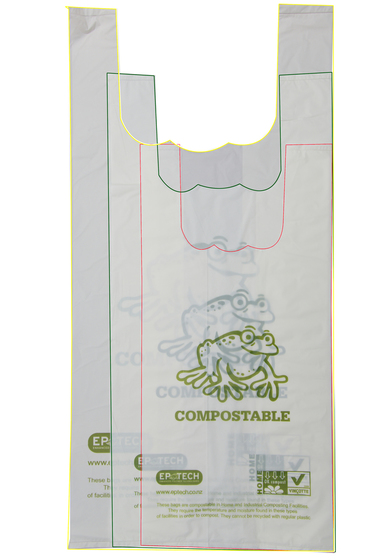How to choose the right size rubbish bag for your bin
Which rubbish bag do I need?
Rubbish bags are made from a variety of materials depending upon what waste is going to be put in them, and how they will be disposed of.
When buying rubbish bags, there are three key factors you need to consider. The first is the type of bin bag you need. The second factor is the size of bag, so you make the most of the space in your bins. The final factor is the weight and quantity of waste going into your bin bags.
Choosing the right rubbish bag
You probably haven’t given that much thought to rubbish bin liners at your business. If your business is a large one, however, you will have lots of different-sized rubbish bins in a variety of places, and because what’s being thrown out can vary significantly, you will need a load of different bags to line them.
This area where you throw things away might be a goldmine for cost savings. Are you using the most cost-effective rubbish bin liners? If you’re using more bag than you need, you’re wasting money. Look at how bags fit each bin. If a rubbish bag hangs over the edge by more than 15 cms, you’re using too much bag for the job. If you don’t need the extra weight in your rubbish bags, don’t pay for it.
 How to choose the right rubbish bag
How to choose the right rubbish bag
What kind of rubbish gets tossed and where? Will the bag need to contain sharp objects? Is the rubbish heavy or wet? If yes, you will need low-density bags. If the answer is no, a high-density polyethylene bag will do the job. These rubbish bags are best for soft refuse such as paper in an office or bathroom.
Looking for rubbish bags? We can help! Check out our handy rubbish bag size chart.
What size rubbish bag do I need?
To make the most of the space in your bins, it’s important you find the correct size bag. Often it pays to disregard the litre size of the containers as what’s listed on your bin may be different from the rubbish bag that fits.
To find the correct size bag for your bins, you need to understand the three measurements used to calculate the dimensions: face width, open width and length.
The face width is the sealed, closed width of the bottom of your bin bag. The open width is the maximum width of the bin bag when it is stretched from one side to the other. The length is simply the measurement from the top to the very bottom of the bin bag.
All of our bin bags state the face width, open width and length – saving you time and effort on measuring.
What size bin bag for my round bins?
To find the correct size bin bag for your round bins, there are two simple steps.
- Measure the circumference of your bin. A simple way to calculate the circumference is to multiply the diameter (the width from one side to the other) by 3.14 (pi).
- Divide the circumference by two. This gives you the open width size you need for your bin bag.
- Measure the height of your bin from top to bottom. Add 10-15cm to allow for an overhang which stops the bag falling into the bin and gives you plenty of room for tying. This is the length of bin bag you need.
What size bin bag for my square and rectangular bins?
To find the right bin bag for your square and rectangular bins you must add up each of its sides and divide by two.
- Calculate the perimeter - the total measurements of all the sides of your bin.
- Divide the perimeter of your bin by two. The resulting number is the open width you need for your bin bag.
- Measure the height of your bin and add roughly 10-15cm onto the total to allow for a good overhang and easy tying.
Check out our product lines or talk to us about how we can help you use the right size rubbish bags at your business. Call 0508 467 462 or you can email us at any time.
Getting rubbish bag thickness right
The rubbish bag thickness or gauge will determine the strength, weight, and price of your bags. The greater the gauge, the thicker the bag. Low-density bags will have a thicker gauge and are ideal for heavier items. High-density rubbish bags have a lower gauge, are lighter, and can help with lower freight, storage, and warehousing costs. These bags are for light contents that do not have jagged or sharp edges as they can puncture and tear easily.
It makes dollars and sense to get rubbish bag thickness right. If you're using bags that are too thick for what’s going into them, you are essentially throwing money away with the rubbish. This is quite a common problem when businesses look to use one rubbish bag for all receptacles. For example, if you're using more expensive low-density rubbish bags on bathroom rubbish, you're using the wrong bag. Conversely, if you use bin liners that are too thin, they can lead to spills hazards.
Understanding bag gauge and thickness
Microns are the thickness of the bag itself.
25 microns = Light Duty, economy black bin liner typically sold in discount stores.
30 microns = Medium duty, this would be the standard bin liner.
40 microns = Medium duty, most popular thickness bag for general purpose refuse sacks.
50 microns = Heavy duty bag, suitable for commercial waste.
75 microns = Extra heavy duty, ideal for building and garden waste.
125 microns = Normally a rubble sack for building waste.
For every day, kitchen-type rubbish, a 25 will do just fine. For heavier rubbish and items with sharp edges, choose a 40 or higher.
Choose your weight requirements
To avoid rips and tears, pick a bin bag that is strong enough to handle the weight of your rubbish. These ratings are the maximum weight capacity each bag can hold in kilograms and range from the light-duty 5kg bin bags to the extra heavy-duty 20kg sacks.
To talk to us about how we can help out with rubbish bags, please call 0508 467 462 or you can email us at any time.

Posted: Saturday 22 May 2021


